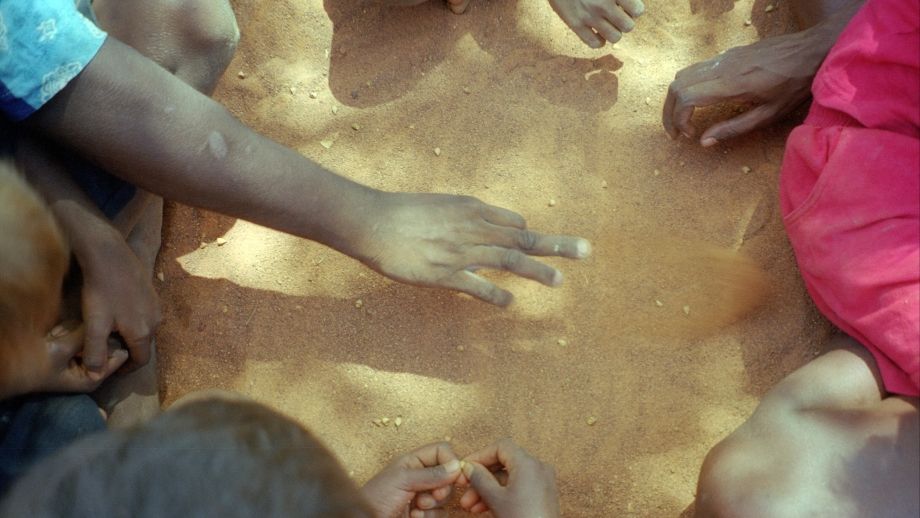Understanding language development to improve Indigenous children’s wellbeing

Children making animal tracks in the sand. Photo: Carmel O'Shannessy
Many Indigenous children who grow up in Central Australian towns and remote communities speak in a combination of languages to communicate with their families – often using more than one language in a single interaction or sentence.
For years, evaluating Indigenous children's language knowledge has been hindered by a lack of effective assessment tools. However, a pioneering project led by researchers at the Australian National University (ANU) is now addressing this gap.
ANU College of Arts and Social Sciences’ (CASS’) Associate Professor Carmel O’Shannessy, Visiting Indigenous Fellow Vanessa Davis (CAEPR, and Tangentyere Council Research Hub) and Dr Denise Angelo are collaborating with First Nations researchers Jessie Bartlett and Alice Nelson –from Red Dust Role Models– to investigate how young children acquire language skills in Central Australia.
Failing to understand how young children develop language skills may negatively impact their lives. “Language skills are integral to cognitive development and essential for cultural continuity, social cohesion and educational and vocational success, which are important determiners of health,” Professor O’Shannessy says.
“When only English is in focus in health or education assessment environments, the children’s knowledge of the languages they learn at home is not recognised. When professionals do not recognise the language knowledge children bring, they can critically undervalue their developmental progress. In education settings, they cannot match their teaching goals and methods to the children’s learning needs”.
As a result, the ANU research team has developed resources –including an app called the Little Kids’ Word List–, which map out how different languages are spoken with young children in family settings. The set of words enables a novel assessment of language development for kids who speak Eastern and Central Arrernte, Western Arrarnta, Walpiri, English or a combination of these.
The project is being funded by the Australian Research Council’s (ARC’s) Future Fellowships scheme and the ANU Futures Scheme.
Aimed at informing health and education stakeholders, the ANU-led project marks a first-of-its-kind initiative in Australia. “There have been some studies before, but not on the same languages or with the same aims or perspectives,” Professor O’Shannessy explains.
The CASS academics and their team are generating new knowledge that is being shared with practitioners, ultimately benefitting the education and wellbeing of the children and their families. Owing to these materials and associated workshops, health and education professionals can now understand how to effectively evaluate the languages knowledge the children bring from home.
In addition to its own goals, the project has also the potential to provide a model for work in other areas. “The Little Kids’ Word List could be developed to include other languages, if the foundational empirical work were to be done. This would be a great aim to support,” Professor O’Shannessy argues.
By integrating their findings into education and health environments, the researchers are working to improve the future prospects and wellbeing of Indigenous children in Central Australia. In consequence, they are actively seeking opportunities to inform early childhood policy, ensuring these language contexts are not overlooked.
The ANU language assessment tools could be the key to recognising the children's potential, a much-needed resource that will continue to assist health personnel and educators to acknowledge and build on the children’s learning strengths –an essential part of their personal development.
Additional collaborators on this project includeDr Rikke Bundgaard-Nielsen, Dr Yizhou Wang, Dr Jennifer Green, Ashleigh JonesandShubo Li.